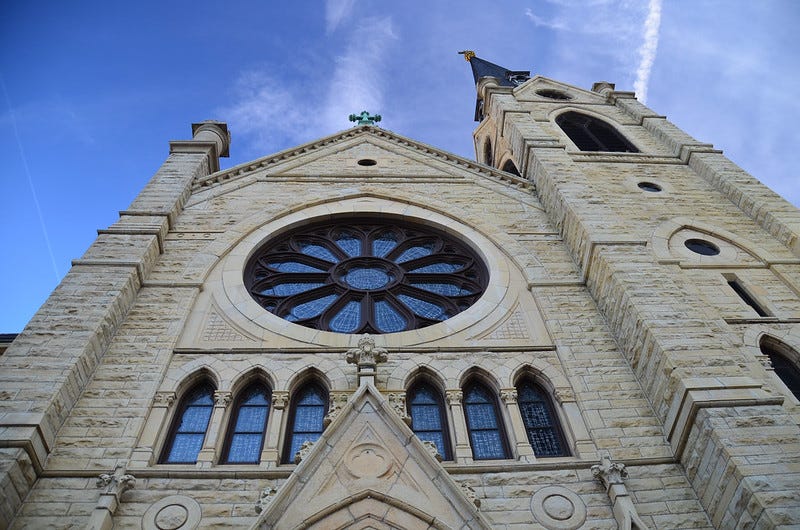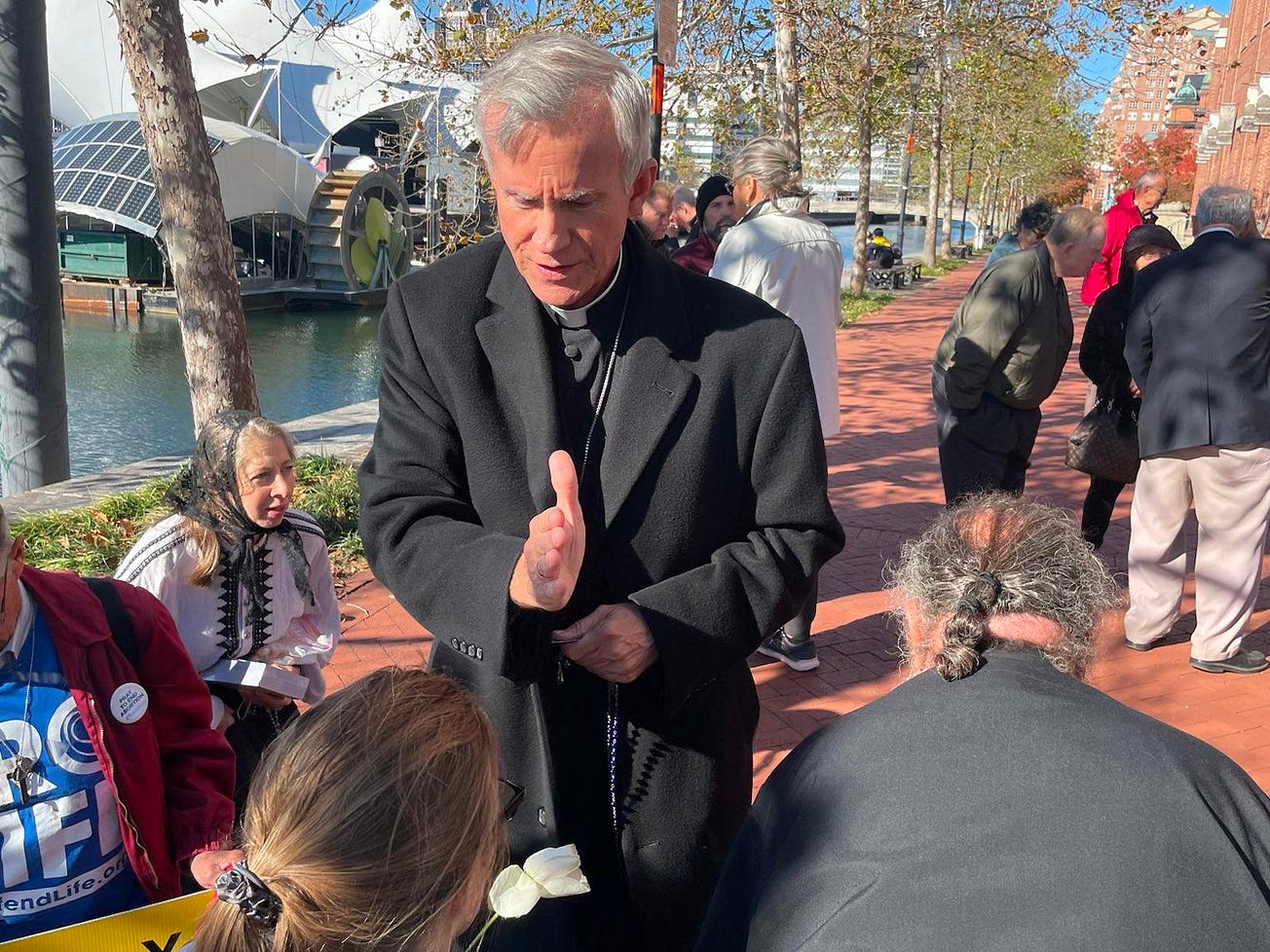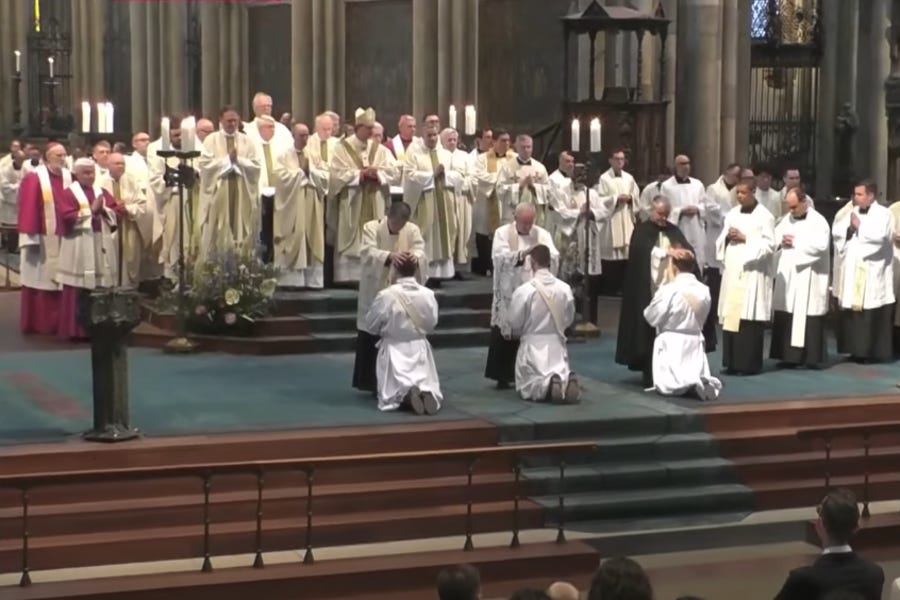Archbishop Robert Francis Prevost assumed leadership last week of the Vatican’s Dicastery for Bishops, the curial department responsible for episcopal appointments world-wide, and for managing investigations into bishops under the norms of Vos estis lux mundi.
The Chicago-born Augustinian took over from the long-serving Cardinal Marc Ouellet, who had been in the job since 2010. With a growing list of superannuated diocesan bishops to replace, Prevost looks poised to oversee a generational reshaping of the U.S. Church.
But how fast can he tackle his inbox, and what else is going to demand his attention? And given that Prevost has spent the last decade out of the United States, and far from Rome, whose advice will he be taking as he gets to work?
—
At first glance, the dioceses of the United States might not seem to need too much attention from Rome’s bishops’ office.
Currently only two Latin Catholics dioceses (the Archdiocese of Dubuque and the Diocese of Fairbanks) are without a bishop.
But barely under the surface is something of a demographic time-bomb, which will have to go off over the course of Prevost’s five-year term.
Eleven dioceses and archdioceses in the U.S. are currently led by bishops over the nominal retirement age of 75, including two traditionally cardinalatial sees.
Lining up a replacement for Cardinal Séan O’Malley of Boston, who will turn 79 in June, is likely to be the first big project for Prevost as he gets his feet under the desk in Rome, and could signal the tone that Prevost’s episcopal picks will follow for the rest of his tenure, at least in the U.S.
The Boston province and northeastern region has been well-stocked with bishops with senior experience both locally and further afield.
The strongest local option is likely Bishop Christopher Coyne of Burlington, another local native and who served as the head of communications for the Boston archdiocese during the Spotlight scandal — a job he has said he previously turned down and only accepted after telling Cardinal Bernard Law to his face that he wasn’t going to lie or disparage victims to shield the archdiocese.
But O’Malley’s advanced age and the need to replace him sooner, rather than later, may give Prevost the freedom to consider candidates from outside the box, and outside the Boston region.
Expectation has been growing in some wings of the American episcopate that the Boston see could go to Cardinal Robert McElroy of San Diego who, while hailing from the other side of the country, can probably count on the recommendation of friends like Cardinal Blase Cupich, who is a member of the Dicastery for Bishops, to recommend him — assuming he wanted the job.
Parachuting in McElroy — who is something of a polarizing figure among the U.S. episcopate — over a more locally known candidate would likely be seen as something of a statement of intent from Prevost by the other American bishops, and could signal a slate of bold picks to follow.
On the other hand, a less contentious local appointment might be a sign that Prevost intends to take a more collaborative approach to assigning bishops.
In either event, there is no question that the new prefect will have the chance to leave a deep mark on the U.S. episcopal landscape. Apart from the 11 dioceses with already superannuated bishops, a further eight diocesan bishops will turn 75 in the next year — six of them metropolitan sees — and another 14, including five archdioceses, the following year.
This will, in turn, have a profound impact on the USCCB membership and leadership contents which have, in recent years, entered a new phase of shorter-term election slates and shifting voting blocs.
—
One of the key factors for who and how Prevost will make recommendations to the pope will be from where he is getting his advice.
In recent years, officials at the Dicastery for Bishops have privately said that the traditional input and recommendations of the apostolic nuncio, currently Archbishop Christoph Pierre, himself 77, have weighed far less heavily in the balance than the views of the two American cardinals on the dicastery, Cardinal Blase Cupich of Chicago (74) and Cardinal Joseph Tobin of Newark.
But a far more telling indication of how much of a mark Prevost will make in running his new department will likely be reflected in the dicastery’s senior staff.
For the last several years of Ouellet’s tenure, officials at the dicastery often remarked that the real decision making power had devolved to the department’s secretary, Archbishop Ilson de Jesus Montanari, who was rumored to have been Pope Francis first and preferred candidate for the top job, but to have turned down the promotion more than once.
If, and for how long, Montanari continues in post will be keenly watched within the curia. And, should Montenari depart in the coming months — most likely to lead a senior archdiocese in his native Brazil — whoever ends up being his successor could turn out to be as important an appointment as Prevost’s own.
—
Of course, making recommendations to the pope on which bishops to promote is only part of Prevost’s new job. Since 2019 and the scandals of McCarrick and Chile, the implementation of Vos estis lux mundi and the overseeing of investigations into allegations of abuse and negligence by bishops have become key parts of the prefect’s brief.
Although Pope Francis moved to reissue Vos estis last month, making minor revisions and making the formerly ad experimentum law permanent, the legislation has come under considerable criticism from abuse reform experts and Vatican watchers alike.
A perceived key flaw with the law’s implementation has been the lack of consistency with which it is applied — with allegations against some bishops appearing to get a full and formal Vatican investigation and others only cursory treatment — and an absence of transparency.
While in some cases Prevost’s department has announced high profile processes against serving diocesan bishops, in many cases the dicastery has refused to even confirm if or when allegations are received, let alone how they are examined.
With clamor growing for more transparency on how abuse allegations and canonical processes are handled across Vatican departments, to what extent — if any — Prevost is seen to respond to those calls will be a key metric by which he will likely be judged in office.
The chances of the new prefect ushering in a new era of transparency with some kind of dramatic gesture, like publishing a list of all open or concluded Vos estis investigations into bishops, are probably slim to none. But it will be telling to see the extent to which Prevost engages with critics of a system he is now largely responsible for administering.
Whether on episcopal appointments or investigations into bishops, there are real expectations that Prevost could prove to be an agent of change.
Whether he is or not, the first six months of his term will likely say a lot.




